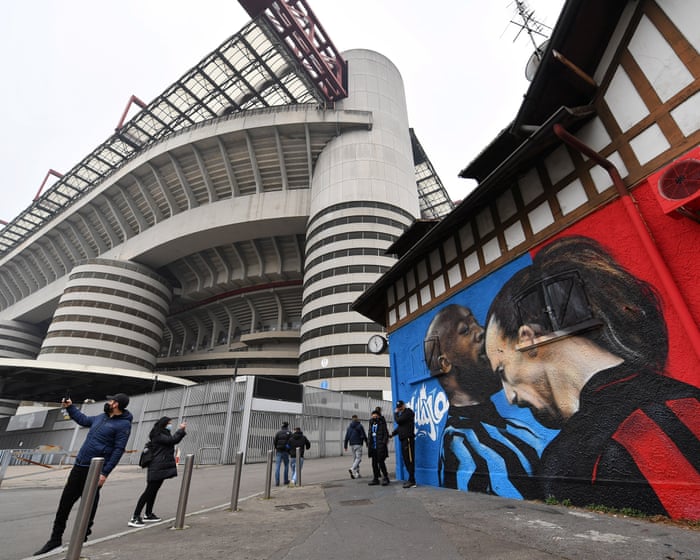Outside the council building, a protester held a sign declaring, “San Siro belongs to the citizens.” Yet Milan’s city council was on the verge of overturning that sentiment, voting to sell one of football’s most iconic stadiums to its tenants, who intend to demolish it. AC Milan have called the Stadio Giuseppe Meazza home since 1926, with Inter joining them as co-tenants 21 years later. Together, they now plan to construct a shared new stadium on the same site.
This move has been a long time in the making. The clubs first announced joint plans for a new stadium back in June 2019, aiming to complete it within three years. They consulted international architecture firms and unveiled designs, but the project never advanced beyond that initial stage.
To build on their current grounds, the clubs needed to own the land first. San Siro has been owned by the Comune di Milano since 1935. Their attempt to purchase it six years ago was delayed by the Covid-19 pandemic, followed by political opposition and laws protecting historic landmarks.
In 2023, Milan proposed a separate plan to build their own stadium in the southeastern suburb of San Donato. The feasibility of this idea was questioned, as local regulations would require a large portion of the land to remain public green space, raising doubts about whether the remaining area would be sufficient. Both clubs were actively weighing their options.
Was this partly a negotiating tactic to pressure authorities into allowing a rebuild at San Siro? Undoubtedly. But it wasn’t an empty threat. When Inter’s president, Giuseppe Marotta, was asked last month if the club might have to relocate outside Milan, he replied, “Absolutely yes.”
Marotta has been leading the charge recently, repeatedly explaining in interviews why a new stadium is essential. Emotionally, it’s a hard case to make.
San Siro remains a breathtaking venue for football, a concrete giant that impresses with both its structure and its storied past. Its steep stands make you feel close to the action, even from the highest tiers. The sensation of gravity and the vibrations underfoot when a big goal is scored create a uniquely thrilling experience.
The stadium’s brutalist exterior has its own beauty, from the crown of red steel latticework to the mesmerizing spiral ramps that guide fans down from the upper levels. It’s an instantly recognizable landmark in an age when many stadiums look alike.
Yet, San Siro may no longer suit modern football. Last September, UEFA revoked its hosting rights for the 2027 Champions League final after local authorities failed to deliver promised renovations. In its current state, the stadium wouldn’t qualify to host matches during the 2032 European Championships in Italy and Turkey.
This last point is particularly striking: Milan, a wealthy center of culture, fashion, and finance, home to two of the world’s most famous football clubs, risks being sidelined in international tournaments. As Marotta noted last month, “The city of Milan risks winding up with a marginal role in the European and global game.”
His arguments resonated with the local council, which voted in favor of the sale.By a narrow margin of 24 votes to 20, the sale of the Meazza stadium and surrounding land at San Siro for €197 million was approved. This followed a debate that lasted over 11 hours, ending just before 4 a.m. on September 30. The strong emotions on both sides are unlikely to fade soon, as a group of local residents announced a legal appeal against the sale within days.
Marotta described this stage as an “interim bureaucratic phase,” stating, “In November, we will prepare the deeds and then move on to the planning phase.” Any delays in the sale could have significant consequences. One potential hurdle is legislation protecting historic buildings; the Meazza’s second tier could be designated a landmark 70 years after its 1955 construction, but only if it remains under local authority ownership. However, the exact date for this rule to apply is disputed.
If the sale goes through, Inter and Milan will jointly control the San Siro land through a holding company with equal shares. They plan to start building a new stadium in 2027 and open it by 2031, with design by Foster + Partners and Manica. The new stadium will be constructed next to the old one on the current car park site, allowing both teams to continue playing at San Siro until the new venue is ready. The old stadium would then be mostly demolished, with parts preserved for redevelopment into commercial buildings, offices, and a hotel.
The loss of such an iconic Milan and global football landmark is saddening. Yet, aside from local politicians and residents opposing the sale of public property, reactions have been largely practical. Veteran journalist Fabio Caressa noted that opponents “don’t offer alternatives… They only say no because San Siro is a work of art. You can still visit museums or the Colosseum, but they aren’t functional for everyday life. They don’t hold shows in the Colosseum anymore.”
Ultra groups from both Inter and Milan have protested this season over ticket price hikes and restrictions on fans and banners in the Curva, but there has been less outcry about the new stadium. When they have spoken out, it’s usually to express fears that the move might further marginalize them rather than anger at leaving a historic home.
Overall, there’s a recognition that this is part of modern football. Inter and Milan urgently need new revenue streams to compete with international rivals. While the Premier League’s TV income gap with the rest of Europe is vast, matchday earnings offer a clear growth opportunity. Deloitte reports that Real Madrid earned €248 million from games at the renovated Bernabéu in 2023-24, a rising figure, compared to Milan’s €87 million and Inter’s €81 million at their rented stadium. A new stadium won’t solve all problems, but it will be an important step.The next step is crucial for staying competitive. Even supporters may eventually see some benefits in their own experiences. No one who has had the misfortune of using the Meazza toilets will feel any nostalgia for them.
“This marks the beginning of a tough and challenging journey,” Marotta remarked after the council’s vote at the end of last month. “But I believe we will find our satisfaction in the end.”
Frequently Asked Questions
Of course Here is a list of FAQs about the future of San Siro designed to be clear and helpful for fans of all knowledge levels
General Beginner Questions
1 Why are Inter and Milan leaving San Siro
They want a new modern stadium that they own which would provide more revenue from hospitality naming rights and yearround events helping them compete financially with other top European clubs
2 What will happen to the old San Siro stadium
It is scheduled for demolition to make space for the new construction project A large part of the area will become the site for the new stadium and a modern district
3 Is the stadiums demolition confirmed
While it is the central plan for both clubs the final decision is still subject to official approvals from the Milan city council It is the most likely outcome but not 100 final
4 Where will Inter and Milan play while the new stadium is being built
This is still being decided They will likely play at San Siro until the new stadium is ready minimizing the need for a temporary home
5 What is the new stadium going to be called
It hasnt been decided yet The current name San Siro is the historic name of the district The new stadium will almost certainly have a corporate naming rights partner
Advanced Detailed Questions
6 What are the main financial benefits of a new stadium for the clubs
A new privately owned stadium generates significantly more money through modern corporate boxes premium seating restaurants and nonfootball events like concerts and conferences This revenue is crucial under Financial Fair Play rules to afford top players
7 Why cant they just renovate and upgrade the current San Siro
A major renovation would be extremely expensive and logistically challenging requiring the clubs to play elsewhere for years Building a new purposebuilt stadium from scratch is often considered more efficient and offers a better return on investment
8 What will the new stadium district include
The plans include the new stadium surrounded by a cathedral of buildings which will feature public spaces shops a museum a hotel restaurants and green areas creating a yearround destination
9 How will a new stadium help Inter and Milan stay competitive in Europe
The




